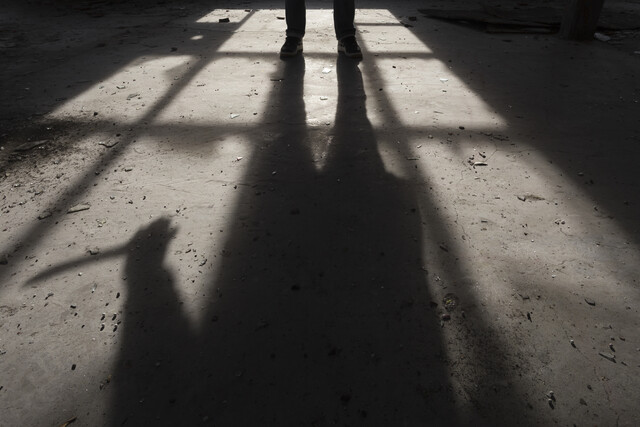A child's death is a social taboo, something so unthinkable that most people push it away, preferring not to talk about it. When the unthinkable does happen, the resulting investigation must be systematic, thorough, and unbiased. Determining the cause of death becomes of paramount importance.
The death of a child signifies the loss of the future, of hopes and dreams, of new ideas and possibilities.
Causes of Death:
Congenital Malformations/Chromosomal Abnormalities: This is the leading cause of infant mortality in the United States. Such deaths typically occur shortly after birth, and do not require the same type of death investigation as deaths under more suspicious circumstances. Most babies are still autopsied in order to determine the exact cause of death.
Complications from Shortened Pregnancy/Low Birth Weight: As with the previous category, deaths occurring from either a shortened pregnancy/gestational time or from low birth weight are due to complications of the pregnancy. These are investigated with autopsy.
SIDS: The third main cause of death in infants from birth to the age of one year is SIDS � Sudden Infant Death Syndrome. Congenital defects and low birth weight complications account for the first two main causes of infant mortality in the country. While SIDS has been around for centuries, it was not an actual diagnosis until the 1960s. Usually the otherwise healthy baby dies while sleeping. SIDS has been researched for over thirty years, and there is still no definitive cause, and there is no one single way to prevent SIDS. However, with intensive investigation and post-mortem autopsies on children who have died for seemingly unexplained reasons, the rate of SIDS has decreased. However, thousands of babies still die every year of SIDS in the United States.
Shaken Baby Syndrome: This is the term used to define the brain injuries found in children less than three years of age, and most commonly under the age of eighteen months, that are the result of vigorous shaking of the child. This causes bleeding inside the skull and causes irreversible brain damage, hearing loss, spinal cord injuries, seizures, blindness, cerebral palsy, learning disabilities, and frequently, death. This is considered to be a form of child abuse.
Accidental Death: It is vital that the investigation be detailed and very thorough. There was a case of a child who died by strangulation, and initially the caregiver was charged with the death of that child, intentional strangulation. The caregiver passed the lie detector test, and the death scene investigators worked countless hours to establish the death scene as accurately as possible. The conclusion was accidental death. The caregiver was charged with negligence, a restraint was not adequately secured, and led to the strangulation of the child. However, if the investigators had not been willing to listen and really delve into the situation, the caregiver could be spending the rest of her life in prison.
Which Infant Deaths Need to be Investigated:
Any death of a child, natural or accidental, from birth to two years is to be thoroughly investigated unless a physician can provide a medical diagnosis that explains the death. The doctor must be prepared to sign the death certificate. All homicides and suspected homicides must be investigated.
Investigation Process:
Because more than 4500 infants die each year in the United States of seemingly unexplained reasons, there must be a process in place to identify whether the child died from SIDS or from some other cause. In 1996 a form was created to standardize the process of investigating and reporting unexplained infant death, but it was not widely used. Because of the need to monitor national trends, evaluate reisk factors, and establish new programs to prevent such deaths, the CDC launched a process to improve how sudden infant death is investigated and reported.
In 2006, the Sudden, Unexplained Infant Death Investigation Reporting Form was created and made available for state and local use when an infant death-scene needed to be investigated.
In addition, death-scene investigators must be well trained. It is vital that the death-scene be well investigated in order to determine if the death was due to SIDS or some other cause. SIDS is a diagnosis that by its very nature is based on exclusion. The skill of the death scene investigator and the examining pathologist will be what determines the actual diagnosis of the unexplained infant death. Mistakes that can point to child abuse or homicide are to be avoided.
Infant Death Investigation Procedures:
The purpose of the investigation is to:
� Establish a reasonable hypothesis for the cause, manner, and mechanism of death.
� Assist the pathologist, medical examiner/coroner in ruling in or ruling out natural causes of death, child abuse, neglect, or injury.
� Identify public health threats; consumer products or unsafe health practices.
� Provide parents and caregivers information about grief counseling, support groups, and healthy infant-care practices.
� Provide information on sudden infant death to epidemiologists and appropriate agencies.
The steps of the investigation will include:
1. Complete death-scene investigation and documentation, to include photographic evidence and re-enactment of the death scene with the individual who found the baby.
2. Scene investigation with photographs to evaluate the infant's sleeping environment.
3. Contact the infant's health care provider and obtain necessary medical records of the baby's medical history and prenatal history.
4. Establish whether Social Services or any law enforcement agencies have had contact with the family or the caregivers.
5. Complete forensic autopsy, specifically the cranium.
6. Histology, toxicology, expanded metabolic screen, and vitreous chemistry.
7. Pediatric Trauma Radiology series
8. Consultation with medical specialists (pediatrician, pediatric pathologist, radiologist, pediatric neuropathologist).
9. Consideration of other causes of death.
10. Support for the parents during the investigative process.
Professionals Investigating Unexpected Infant Deaths:
Each county in the country will have different professionals who attend the death-scene of a child. Law enforcement almost always has a presence. First responders may be from the fire and rescue department, ambulance paramedics or emergency medical technicians. The medical examiner/coroner and county attorney may visit the scene if the investigation uncovers suspicious evidence. Larger municipalities have actual death scene investigators who will be called to the scene. It is vital that all professionals collaborate and work together to accurately establish the cause and circumstances of death. Information about the death of a single child could lead to efforts that will save the life of another child.

























